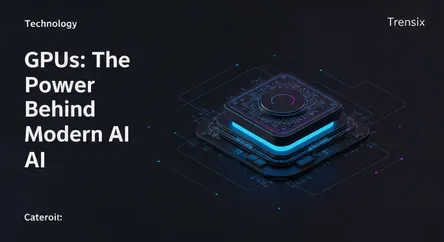Technology
GPUs: The Power Behind Modern AI

Discover why Graphics Processing Units (GPUs) are the essential hardware powering today's AI revolution, from deep learning to large language models.
What is it?
A Graphics Processing Unit (GPU) is a specialized processor originally designed to render images for display. For AI, it's the core hardware for complex computations. Unlike Central Processing Units (CPUs) that handle tasks sequentially, GPUs excel at parallel processing, performing thousands of calculations simultaneously. This architecture is perfect for the massive matrix multiplications that form the foundation of modern artificial intelligence and deep learning models, making them incredibly efficient for AI workloads.
Why is it trending?
The demand for GPUs has exploded with the rise of deep learning. Training AI models, especially large language models (LLMs), requires processing immense datasets and trillions of calculations. GPUs dramatically accelerate this process, cutting training times from years to mere days or weeks. Platforms like NVIDIA's CUDA made it easier for developers to program GPUs for general-purpose tasks, which directly fueled the current AI boom. They are now essential for both AI research and deploying large-scale AI applications.
How does it affect people?
The power of GPUs impacts daily life by enabling the AI services we use constantly. Recommendation engines on streaming platforms, voice assistants, and generative AI tools all rely on GPU-powered data centers. This technology also accelerates breakthroughs in scientific research, medical imaging, and the development of autonomous vehicles. Essentially, the speed and capability of the AI shaping our world are directly linked to the advancements in GPU technology, making complex AI applications accessible and practical.